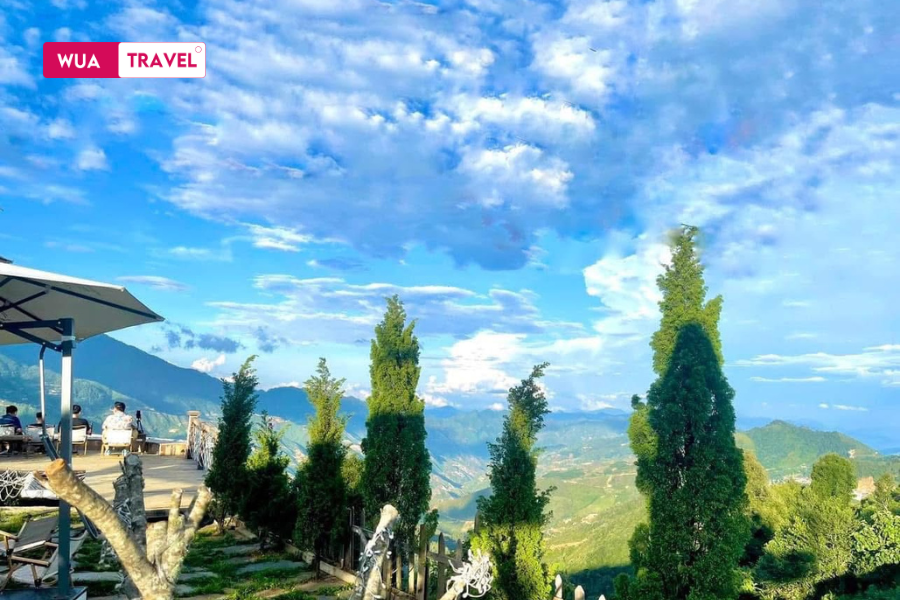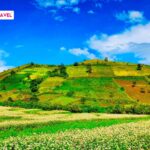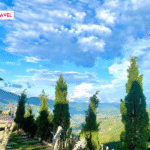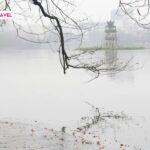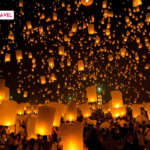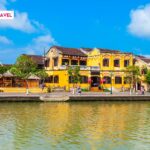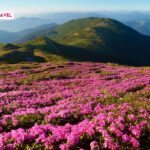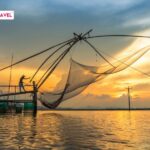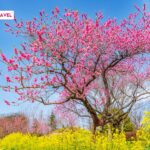Last March, I took a 10-day trip across Vietnam – starting in the spring-bright Hanoi, stopping in ancient Hoi An, and ending on the clear blue sea of Phu Quoc. It was not the noisy festival season, nor the peak tourist season, but March brings me a gentle, fresh, and completely strange place
I still remember the chilly early mornings in Hanoi, the early morning sunlight filtering through the treetops in the Old Quarter. In the Central region, Hue is gentle in the purple of Lagerstroemia flowers, and the atmosphere of folk festivals is bustling back after Tet. In the South, the weather seems to please people with gentle sunshine and cool blue sea. March is like a travel symphony, just bustling enough, just quiet enough to feel.
For me, this is the ideal time to travel to Vietnam: the weather is pleasant, the landscape is starting to change seasons, the flow of tourists is not too crowded, and the prices are still very “friendly”. If you are planning to explore Vietnam, or want to find a time that is both beautiful in terms of weather and has many activities to experience, then March is a great choice..
Weather and climate of the three regions
March in Vietnam is the time of changing seasons, bringing a diverse and relatively pleasant weather picture from North to South. If you are looking for the ideal time to experience nature, explore culture without worrying too much about harsh sunlight or sudden showers, then March is one of the top choices.
North – Late spring colors, mild weather
The average temperature fluctuates from 15–20°C, and can sometimes be lower in the early morning or at night, especially in mountainous areas such as Sapa or Ha Giang.
High relative humidity, about 75–85%, feels cool, sometimes cloudy, but rarely has heavy rain.
In the First 2 weeks of the month, the weather is still a bit cold and foggy, especially in the early morning. At the end of the month, the weather starts to warm up, there are many sunny days, very suitable for walking around town, visiting scenic spots.
Note: Some days may see light drizzle, especially in Hanoi and the delta, making the air more humid and cold.
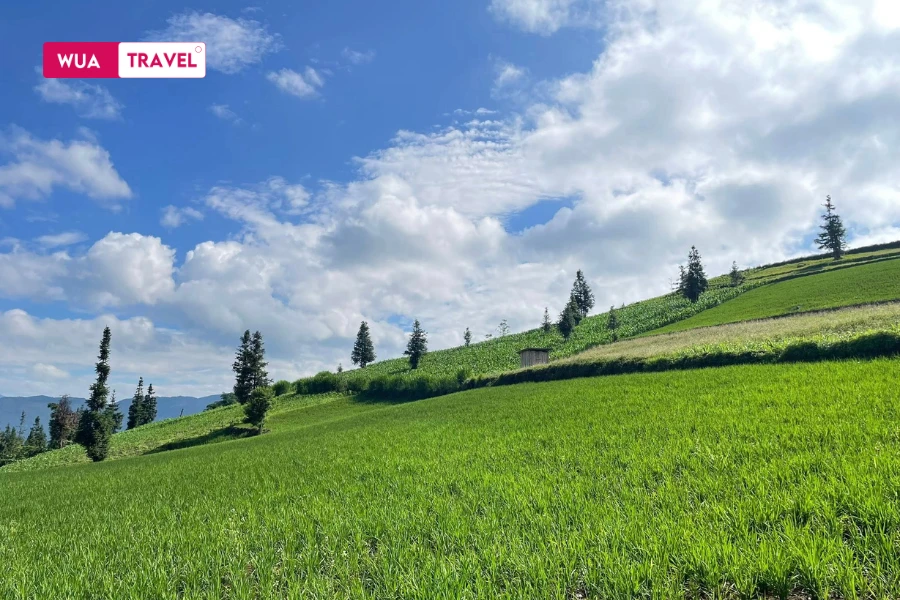
Central Region – Stable weather, ideal for tourism
The average temperature in provinces such as Hue, Da Nang, and Hoi An ranges from 22–28°C, quite mild and pleasant.
Low rainfall, almost no storms or extreme weather, very suitable for sea tourism or exploring Central culture.
The sea breeze is gentle, the sky is sunny but not harsh, and the landscape is brilliant. At this time, Hoi An begins to become beautiful again after the drizzly days at the end of the year, and coastal cities such as Quy Nhon and Nha Trang have begun to welcome more spring tourists.
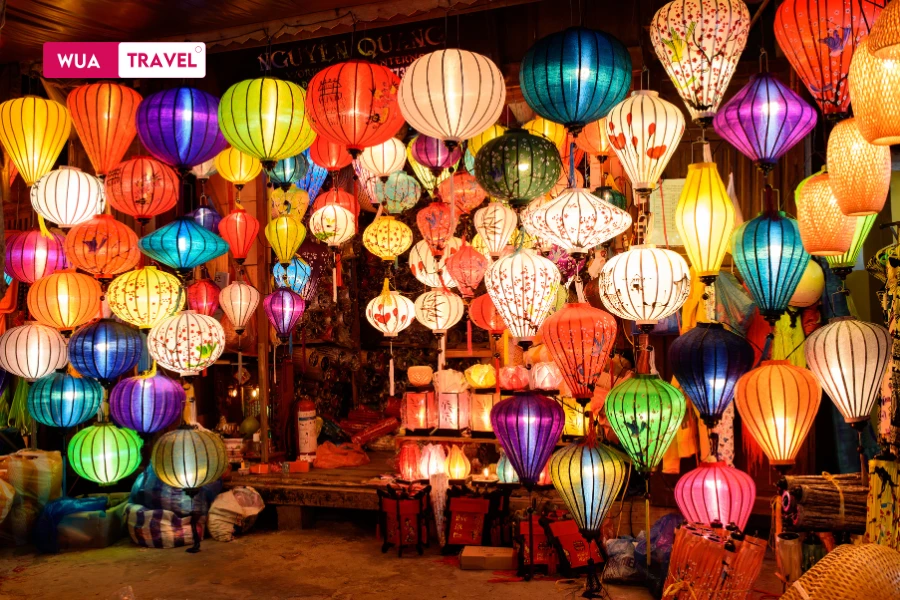
South – Peak dry season, ideal sunshine
Higher temperature. The remaining two regions range from 28–34°C, especially in Ho Chi Minh City, Can Tho, and the Southwest region.
However, this is still the time nice sunny time, no “hey”, because of low humidity (approx.60–70%), dry weather, no rain.
It’s time for outdoor activities: visit floating markets, island tourism (Phu Quoc, Con Dao), trekking, or exploring Western culture.
Small note: You should bring sunscreen and drink plenty of water if you are going to be outdoors a lot.
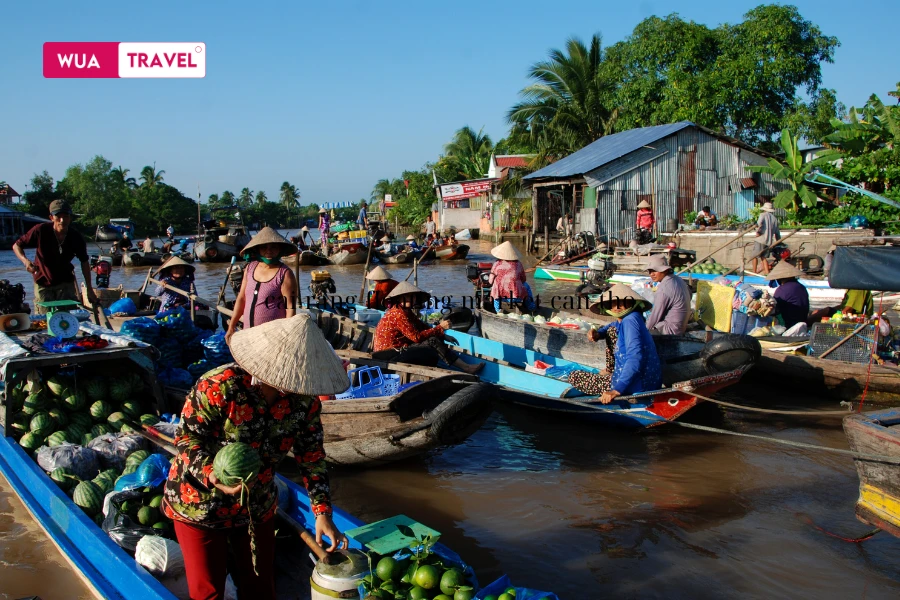
Tourist season and characteristics
March is in end of peak tourist season after Tet. Although not as crowded as January-February, this is still the time when many international and domestic tourists choose to travel in spring, especially to the central and southern coastal destinations.
Compared to other months:
Less rain than April–May, more pleasant weather than the hot summer.
Winter is more fun than June–August (international low season due to heat), but still retains “just right” – not too crowded, not too deserted.
Famous places such as Hoi An, Ninh Binh, Da Lat, or Phu Quoc are starting to get busy, and hotels are still reasonably priced, not skyrocketing like the peak summer tourist season.
If you are looking for a “golden” time to explore Vietnam without having to jostle, still enjoying both the beautiful climate and the necessary tranquility, then March is the month. fully meet both of those factors.
Top Places to go in Vietnam in March
March opens up a journey to explore Vietnam in a balanced version: pleasant weather, vibrant changing landscapes, and just enough tourists to enjoy without being overwhelmed. Here are the top destinations to visit in March, selected based on personal experience, travel trends, and real-world weather conditions.
Hanoi
March is when Hanoi returns to its normal pace after Tet, not too crowded but lively enough for you to feel the soul of the old town.
The weather is chilly in the early morning, with light noon sun, ideal for walks around Hoan Kiem Lake, exploring the old town, or sidewalk coffee.
Outdoor activities such as visiting Duong Lam ancient village, cycling around West Lake, or picnicking in Yen So park become extremely enjoyable.
Especially if you go at the beginning of the month, you may encounter some small folk festivals also last after Tet, like Tay Ho Palace festival or Quan Thanh temple.
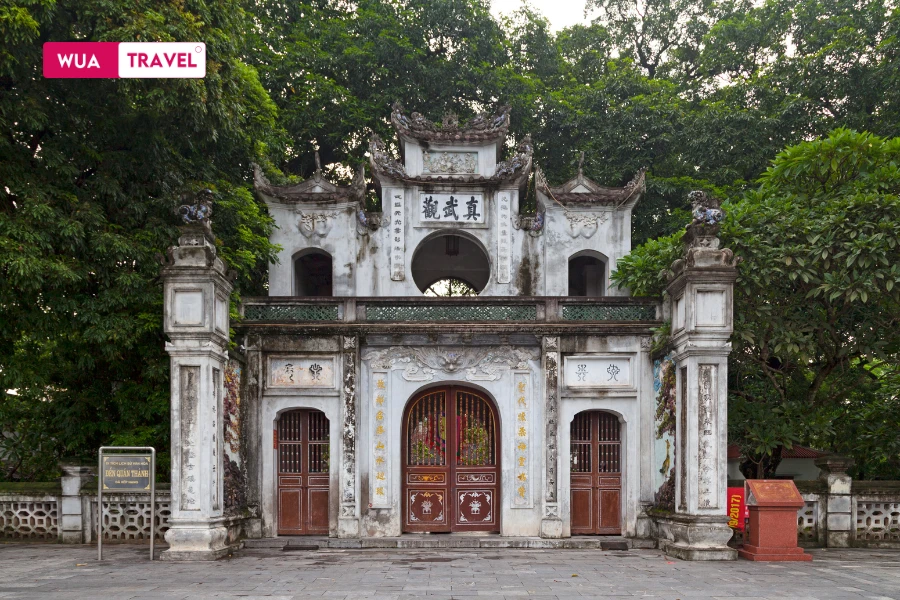
Sapa
March is the season of peach and plum blossoms blooming all over the hillsides of the Northwest region – a vivid spring picture not to be missed.
Temperature ranges from 10–18°C, cool, suitable for trekking to Cat Cat village, Lao Chai – Ta Van, and conquering Fansipan peak.
Photography lovers will be fascinated majestic mountain scenery that blends with spring flowers, and culture lovers will enjoy the traditional festivals of the H’Mong and Dao people.
Note: It can be quite cold at night, so bring a light jacket.
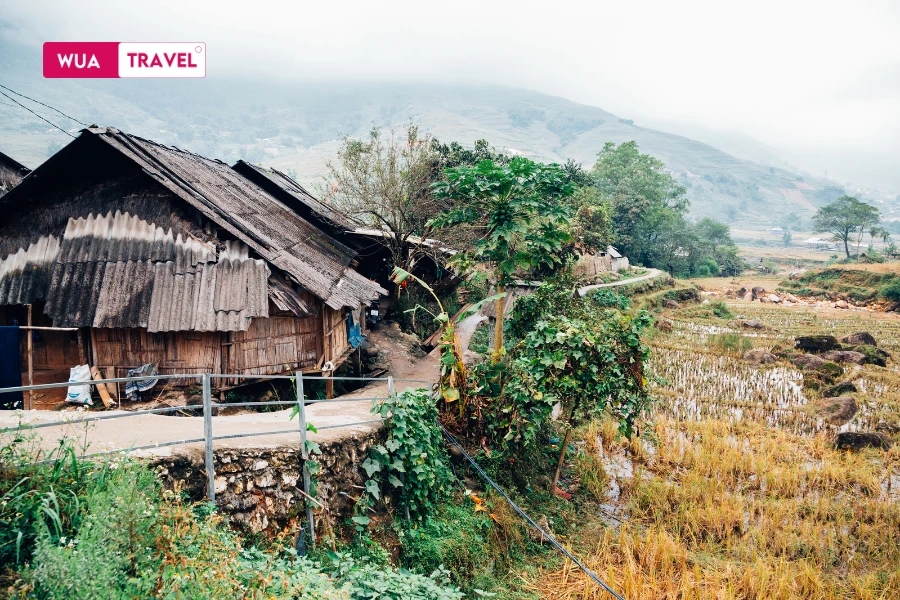
Ha Long Bay
This is the “golden” time to cruise on Ha Long Bay, when the winter fog has cleared, and the spring sunshine covers the sparkling sea.
Good visibility, clear sky, allowing you to fully admire the beauty of thousands of limestone islands from the deck.
The temperature is around 20–25°C, perfect for kayaking, light swimming, or mountain climbing on Titop Island.
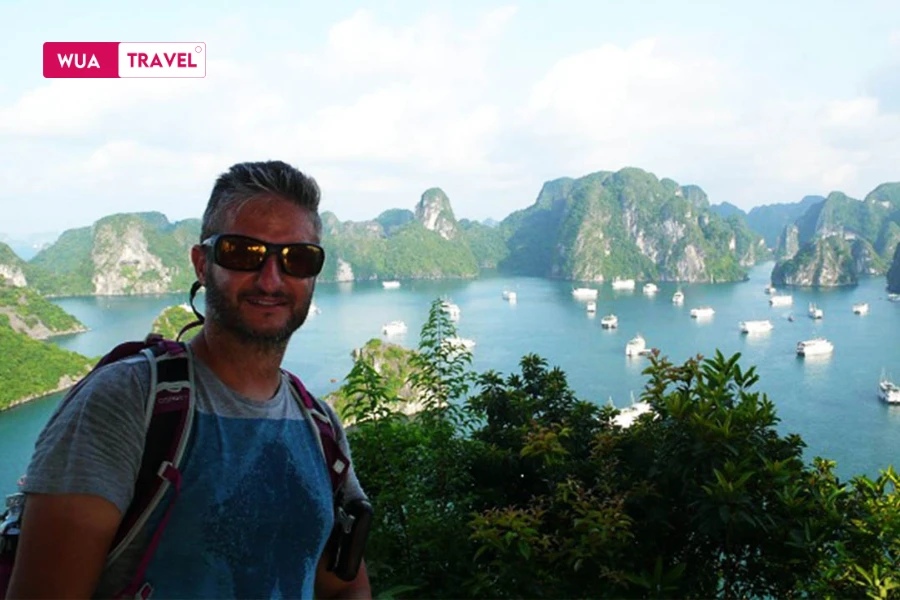
Hoi An
Among the most beautiful destinations in Vietnam in March, Hoi An is dry, not too sunny, very convenient for walking, taking pictures, or experiencing culture.
Strolling around the old town in the morning, sitting at a riverside cafe in the evening, and releasing flower lanterns in the evening – all are pleasant and less crowded than in the summer.
Also, if you like exercise, you can try a SUP or a basket boat ride in Cam Thanh coconut forest, or go to Cu Lao Cham (if the sea is calm).
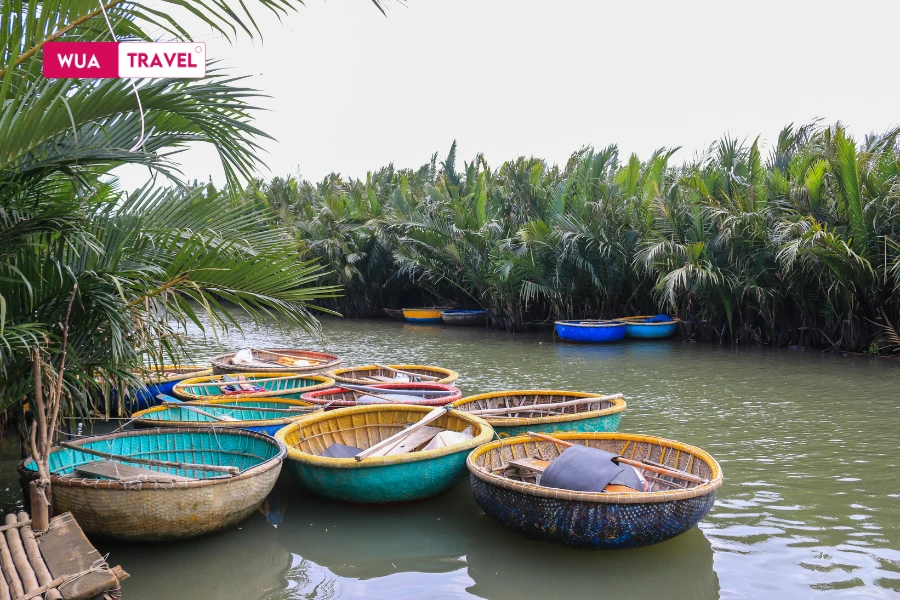
Hue
March is an ideal time to explore ancient capital sites such asImperial City, mausoleum, Thien Mu Pagoda– when it is not too hot and there is hardly any rain.
Hue’s street food is also very attractive – you can try beef noodle soup, banh beo, and royal tea in the light spring air
Another plus is that traditional cultural festivals are starting to stir again, creating a lively but not crowded atmosphere.
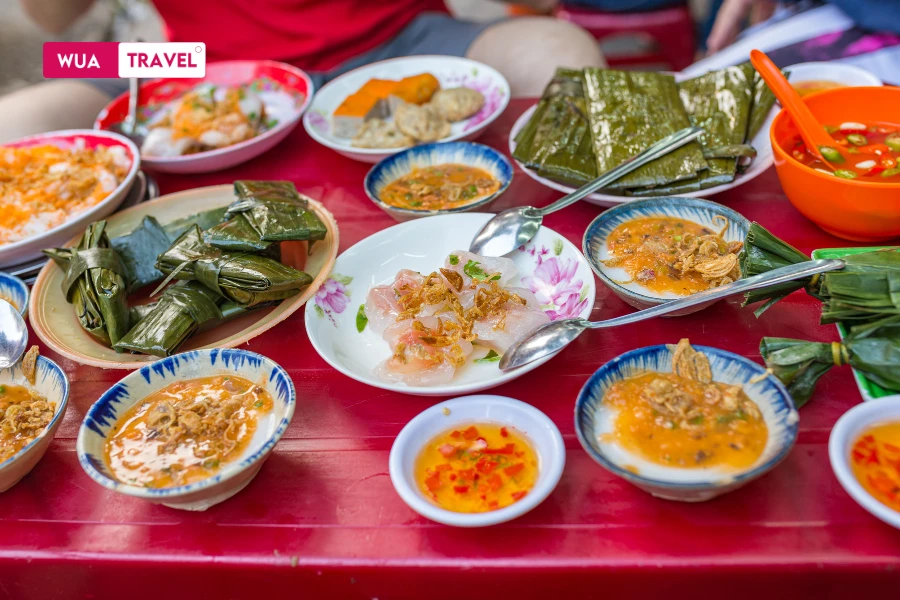
Da Nang
My Khe Beach, Non Nuoc begins to bustle, calm waves, clear water, very suitable for swimming or participating in sports activities such as paragliding, jet skiing.
The weather is stable, around 26–30°C, suitable for both city exploration and relaxation.
From Da Nang, you can easily combine a day trip to Hoi An or Ba Na Hills.
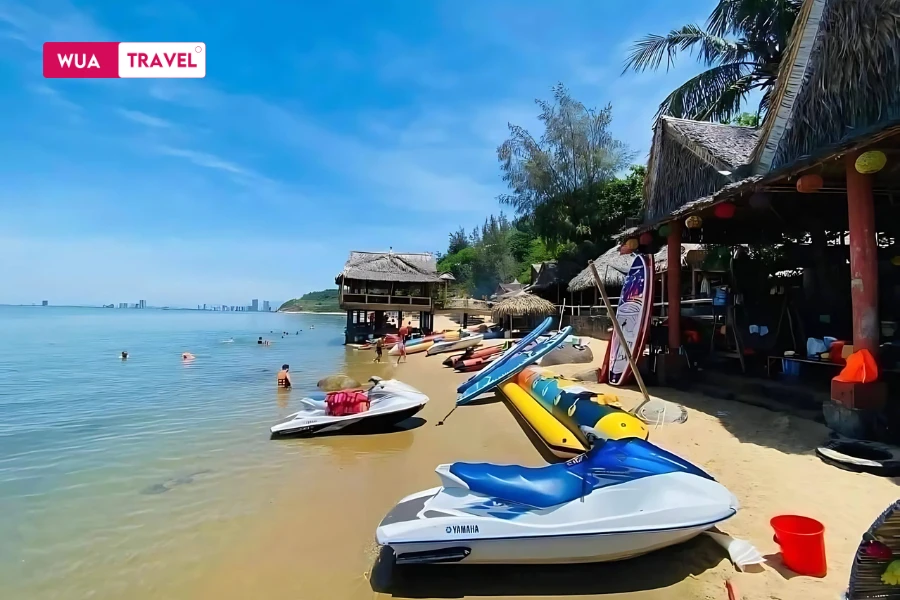
Ho Chi Minh City
Dry, sunny, and rain-free weather helps you fully explore urban life: from Ben Thanh market, Nguyen Hue walking street to rooftop cafes.
Museums, theaters, and shopping malls are also bustling with visitors after Tet.
Outdoor activities such as a motorbike food tour, walking around the Zoo, or picnicking in Can Gio are worth trying.
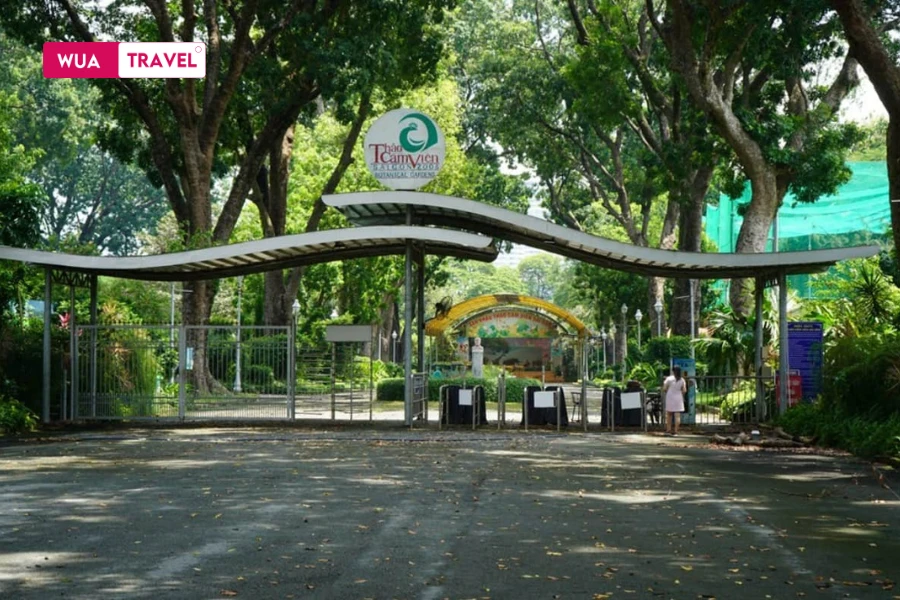
Phu Quoc
March is the peak of the dry season, with clear blue sea, fine white sand, and almost no rain.
Activities such as scuba diving, fishing, stand-up paddle boarding, or chilling at luxury resorts are all at their most ideal stage.
If you are looking for a relaxing, unhurried vacation, Phu Quoc in March is one of the best choices of the year.

Da Lat
March in Dalat is the purple phoenix flower season begins to bloom, the weather is cool, the sky is sunny, extremely ideal for couples, groups of friends, or people who like to “live slowly”.
You can take a walk around Xuan Huong Lake, trek Lang Biang Mountain, or simply sip coffee in a peaceful homestay.
Outdoor activities such as camping and cycling around Tuyen Lam Lake are also very popular.

Things to do in Vietnam in March
March is not only the ideal season for traveling, but also a great time to experience all the special activities of Vietnam – from exploring nature to immersing yourself in local culture. Here are the top suggestions you shouldn’t miss if you want to make your March trip memorable and colorful.
Trekking and mountain climbing
Sapa, Ha Giang, Pu Luong: March is a great time to conquer the northern mountain roads. The weather is dry, cool, the trees are green, and not too slippery like in the rainy season.
Lang Biang (Da Lat) or Ba Na Hills (Da Nang)is also a gentler option, suitable for beginners.
Tip: Start early to avoid the midday sun. Bring water, sunscreen, and good trekking shoes.
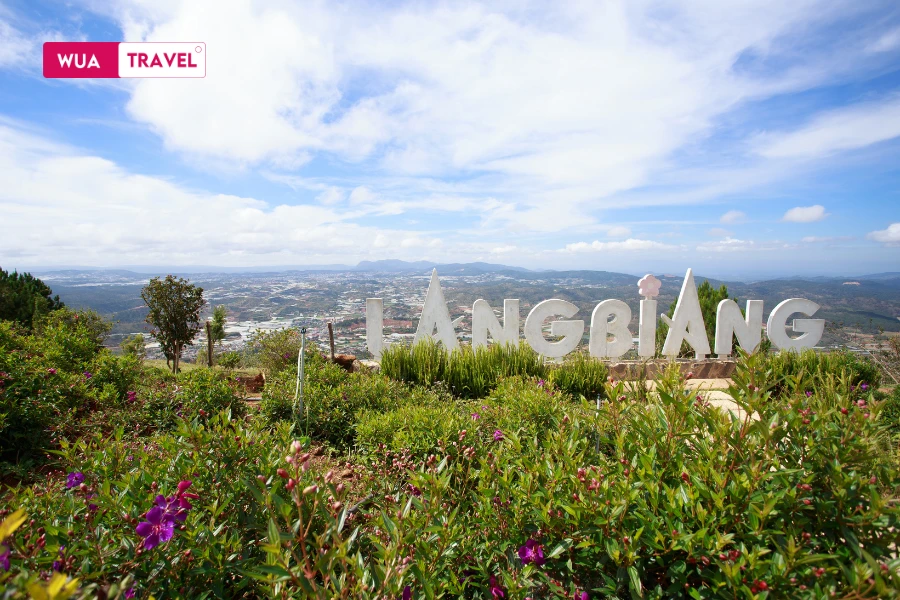
Beach and marine sports
Da Nang, Phu Quoc, Nha Trang, and Quy Nhon are ideal places with blue sea, white sand, and golden sunshine in March.
Activities such as SUP, windsurfing, snorkeling, and kayaking are popular because of the calm waves and clear skies.
Suggested experiences: Try scuba diving at Hon Mong Tay (Phu Quoc) or SUP to watch the sunrise at My Khe beach (Da Nang).
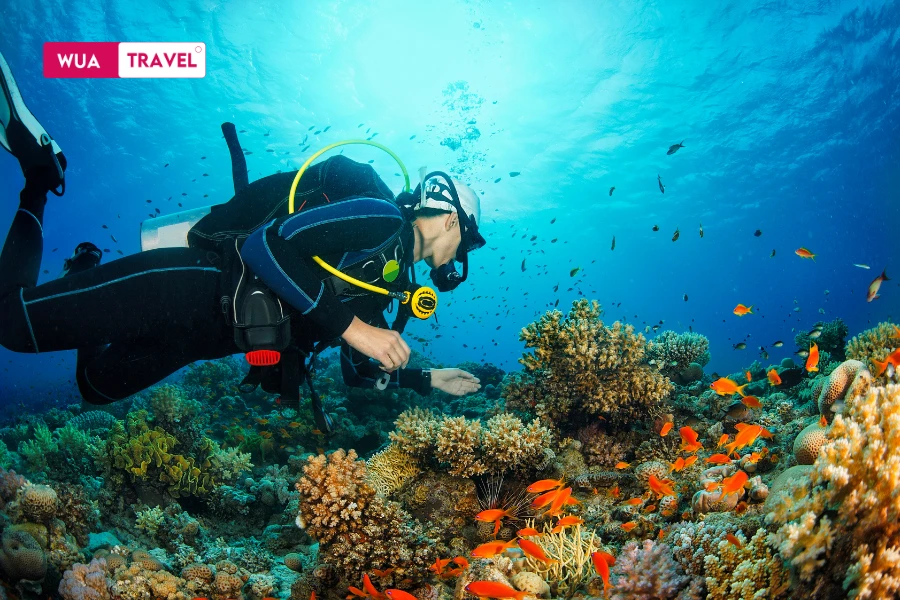
Landscape and nature photography
From Flower Hill in Dalat, white plum blossoms, sapa, arrive, green young rice in Ninh Binh. March brings a gentle spring picture to those who love photography.
The sky is often clear and the light is soft, perfect for taking landscape or travel portraits.
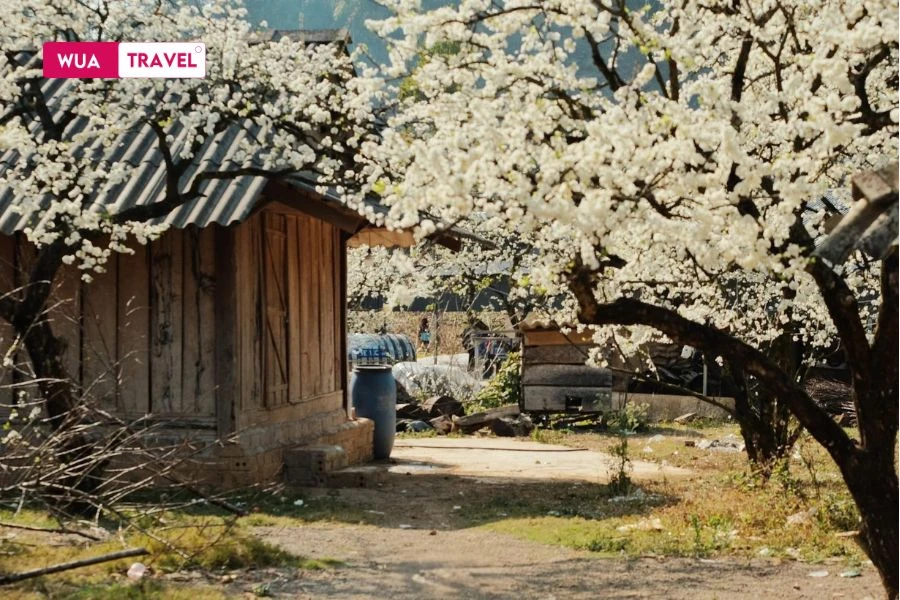
Explore nature
Nature lovers will enjoy trekking in Cuc Phuong forest, boating in Tam Coc, or exploring Cam Thanh coconut forest in Hoi An.
March is the time for ecological reserves not too crowded, to easily enjoy the wild and relaxing space.
Visit historical sites
The mild sunny days of March are ideal for visiting Hue Imperial City, Temple of Literature (Hanoi), ancient Hoi An, or temples in the North.
The pace of life is not too rushed, giving you time to feel more deeply the history and architecture through each old wall.
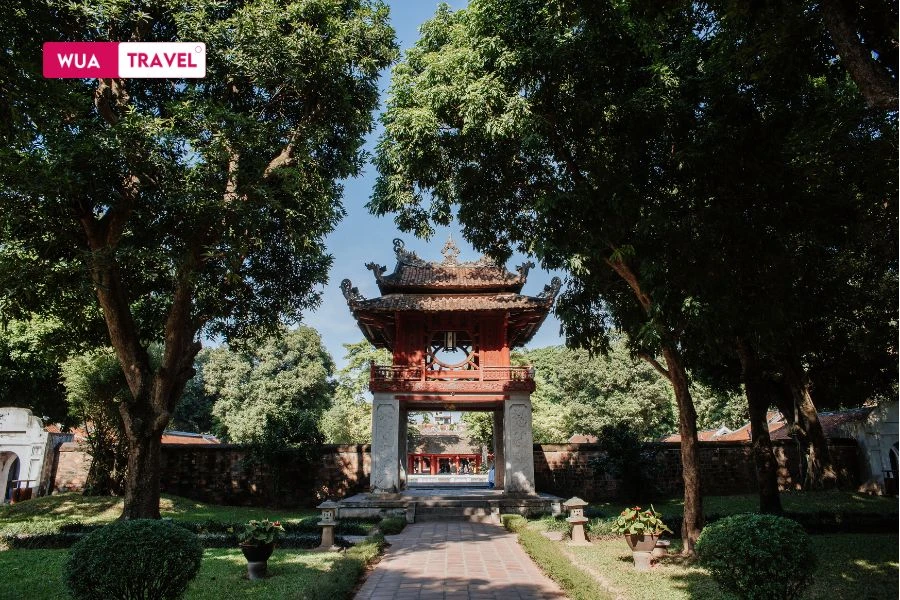
Culinary Experience
Each region has its own special dish in spring: Spicy Hue beef noodle soup, Phu Quoc herring salad, Hanoi vermicelli with grilled pork, or Nha Trang grilled spring rolls- all delicious and suitable for the weather.
Don’t hesitate to try the street food on chilly evenings, or simply sip egg coffee in the heart of the old town.
Practical suggestions: In Hoi An, try the evening “food walk” tour, and in Hue, you can stop by Dong Ba market to enjoy bun hen and banh khoai – cheap, delicious, and extremely local.
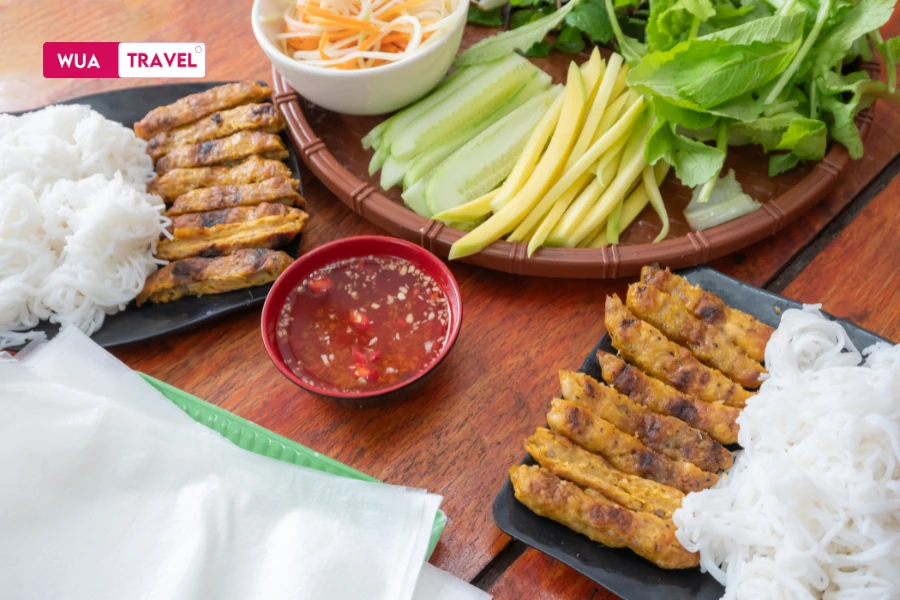
Explore traditional craft villages
Bat Trang pottery village, Hoi An silk village, and Dong Ho painting village are places that are both rich in cultural identity and where you can participate in experiences such as making your own handicrafts, painting, and pottery.
March is when craft villages welcome many tourists but are not overloaded, and you will be able to chat more with local artisans.
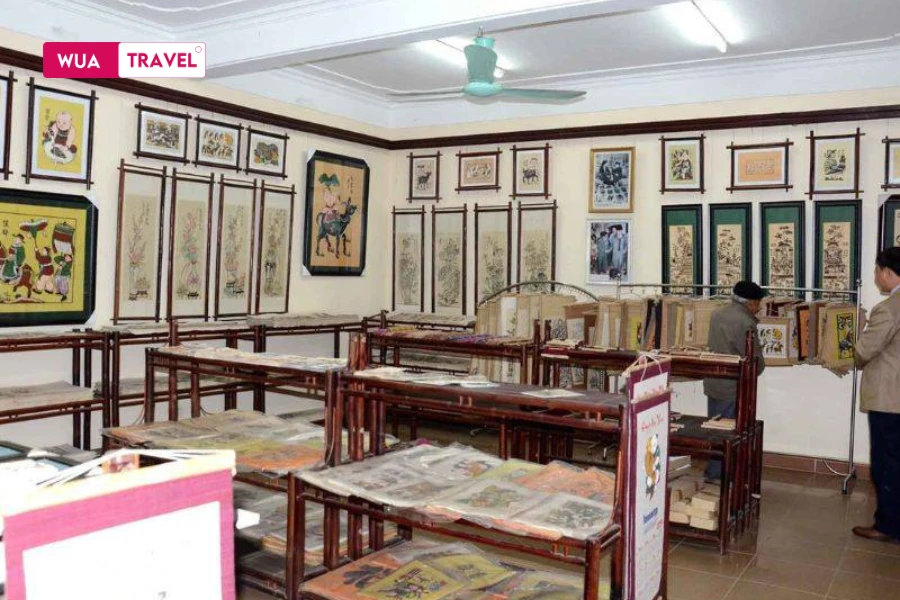
Participate in local festivals
Some folk festivals that last after Tet still take place in March, such as:
- Hung Temple Festival (Phu Tho)
- Phu Giay Festival (Nam Dinh)
- Huong Pagoda Festival (Hanoi – ends mid-March)
This is a good opportunity to understand more about spirituality, beliefs, and how Vietnamese people preserve traditions.
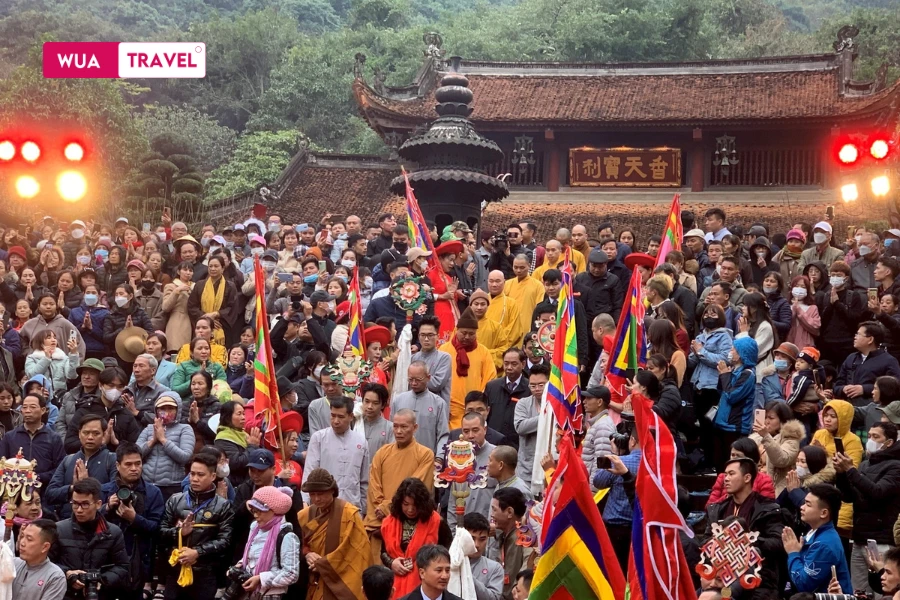
Shopping
From traditional markets likeBen Thanh, Dong Xuan market, to major shopping centers in Ho Chi Minh City, Hanoi, or Da Nang, March has many post-Tet promotions.
If you like handicrafts, try the shops in Hoi An or Da Lat, where you can find indigo dyed fabrics, handmade wool scarves, or pretty pottery.
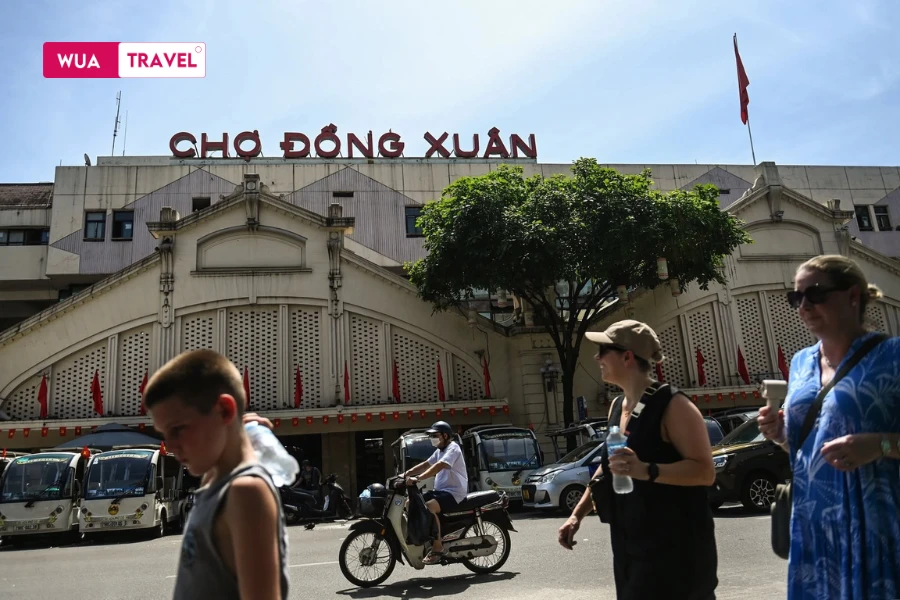
Spa and massage
After long hikes, walks, or constant movement, a Traditional herbal massage or spa at a beach resort is a worthy choice.
In Da Nang, Hoi An, Da Lat, or Phu Quoc, there are many reputable addresses with reasonable prices and not too crowded in March.
Go to the night market
Phu Quoc night market, Da Lat night market, Nguyen Hue walking street (HCMC), or Hoi An ancient town at night become sparkling, cool, and have many delicious dishes.
This is also a good time to buy local souvenirs at better prices than the peak summer season.
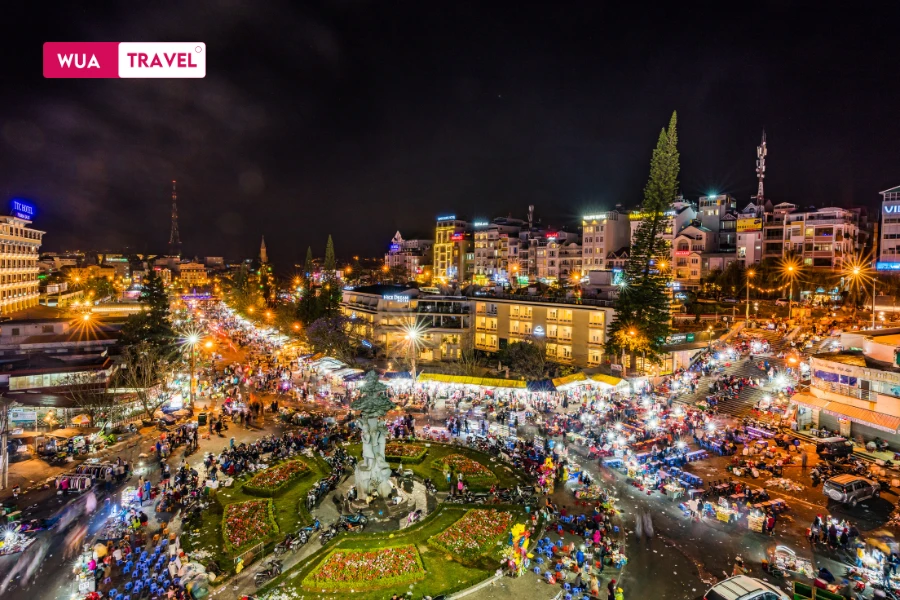
Enjoy live music, late-night coffee
Vietnam’s coffee and live music culture is growing – from Acoustic bar in Da Lat, Hanoi, arrive Beach bar in Da Nang, Phu Quoc.
March evenings are usually cool, ideal for ending the day with a light cocktail and some soothing music, especially if you are with friends or a lover.
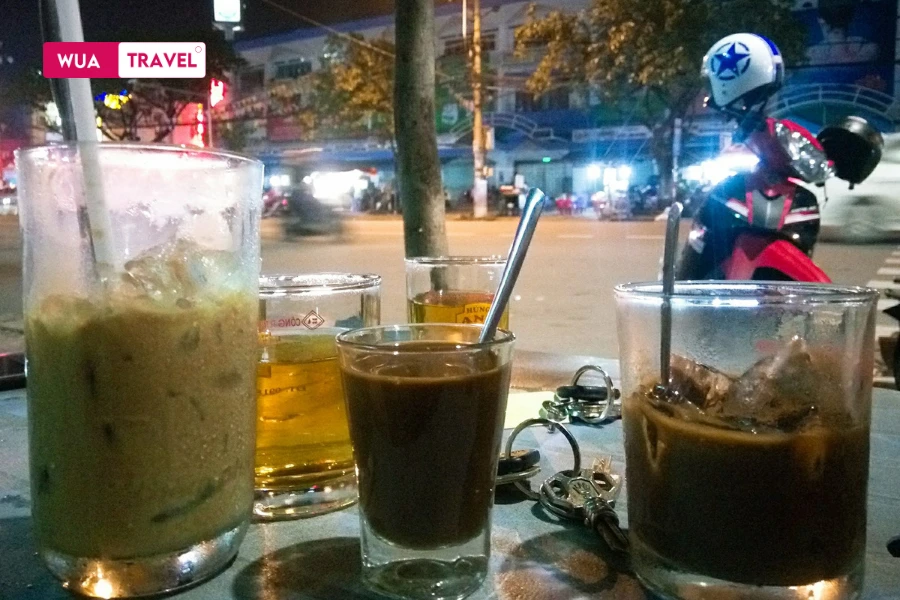
Summary: March is one of the most versatile months to travel to Vietnam – you can trek, swim, learn to cook, go to festivals, or simply live slowly in nature. The diversity of activities is also the reason why many tourists choose to return to Vietnam at this time, because each time you go, you discover a new depth.
Travel Experience in March in Vietnam
When traveling in March – the transitional season in the North, mild sunshine in the Central, and the peak of the dry season in the South – good preparation will help you not only enjoy your trip to the fullest but also avoid small risks that can ruin the experience. Here are some practical tips.
Regional Costumes
Northern region (Hanoi, Sapa, Ninh Binh…): Temperatures can drop below 16°C in the early morning or at night. Bring a light jacket, trousers, a long-sleeved shirt, and a thin towel if you go to mountainous areas like Sapa or Ha Giang. Keep a spare pair of good sneakers, especially if you plan on trekking.
Central region (Hue, Da Nang, Hoi An…): Clear sky, light sunshine, temperature around 25–28°C. Priority Light, airy clothing, but polite enough to enter temples. Bring a Sun protection jacket if moving at noon.
Southern region (HCMC, Phu Quoc…): Lots of sunshine, low humidity. Preparation: Breathable cotton clothing, Sunglasses, a wide-brimmed hat, walking shoes/sandals, and a thin coat when entering air-conditioned places
Indispensable accessories
Sunscreen(SPF 30 or higher) – reapply every 3–4 hours if you go to the beach or are in the sun for a long time.
A sun hat, especially when going to Hoi An, Hue, or the night market.
Comfortable slippers/shoes– a pair of good grip sandals for the old town + a pair of sneakers for climbing is enough.
Light raincoat or folding umbrella– expect some sudden rains in the North, especially in the first half of the month.
Tip: Rolling your luggage will save space and help your clothes wrinkle less.
Weather changes and how to prevent them
The North is still cold in the early morning and evening → It’s easy to catch a cold if you don’t keep warm after sweating (especially after climbing mountains or walking a lot).
If you travel from the South to the North, you should bring cold medicine, throat lozenges, and vitamin C to increase resistance.
Food hygiene
Vietnam has attractive street food, but not all dishes are suitable for foreigners.
Priority accommodation: The restaurant has many local customers, hot food, and bottled water.
Bring Mild digestive medicine or probiotics if you are new to Asian cuisine.
Insect control
Some rural or forest edge areas, such as Cuc Phuong, Moc Chau, and Can Gio, have mosquitoes or leeches.
Bring Insect repellent, wear long clothes when going to the forest or at night.
Use mosquito repellent on your hands and feet before going out in the evening.
Necessary medicines to bring
Headache medicine, fever reducer, allergy medicine, digestive medicine, anti-motion sickness patch if traveling by car long distance.
Personal prescription if you are under treatment or allergic to certain ingredients.
Advice from practice: If you are going trekking for a long time, bring more personal gauze, antibacterial spray, and electrolyte salts to prevent exhaustion.
Asset preservation
Vietnam is safe in most tourist areas, but you should still be wary of petty theft in crowded places such as night markets and festivals.
Use a crossbody bag with a lock, do not leave your phone or wallet exposed in your back pocket.
If you take a motorbike or taxi, always check your belongings before getting off the vehicle.
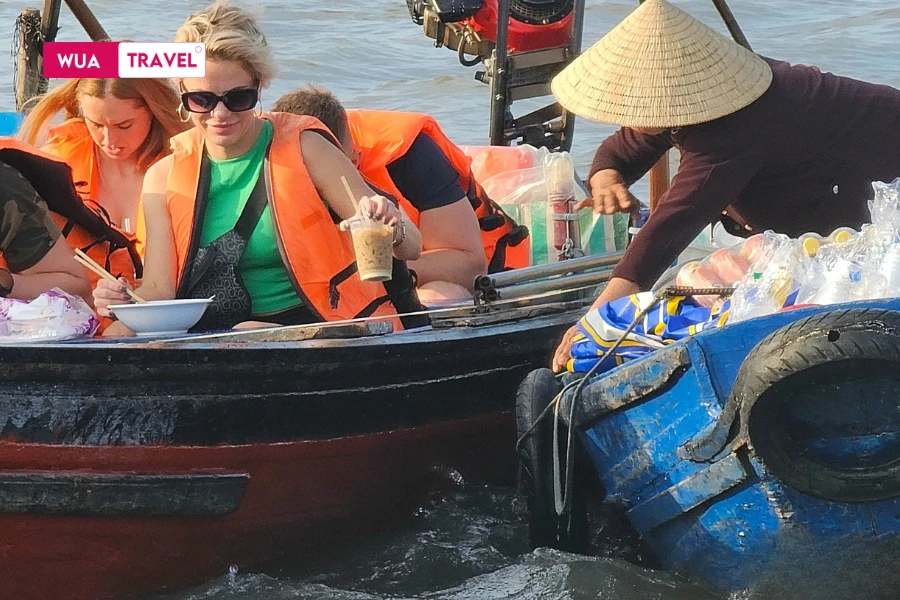
Travel safely
If renting a motorbike: Please check brakes, lights, and gas before going, and wear a standard helmet.
If traveling by night train/bus: Select a reputable company, keep your personal belongings close to your person in the city, should use ride ride-hailing app(Grab, Be, Gojek) to avoid being overcharged or getting lost.
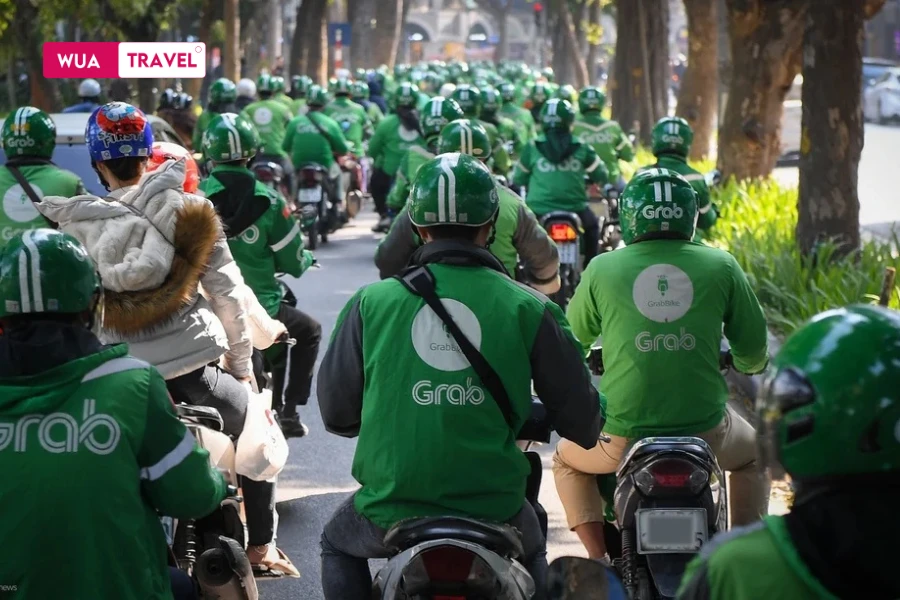
Emergency contacts and SIM card
Buy a 4G SIM card right at the airport or at a Viettel/Mobifone/Vinaphone store. Cheap (~3–5 USD) and convenient.
Save emergency phone numbers:
- Police: 113
- Fire: 114
- Medical emergency: 115
- Embassy/State Consulate of your country (if any)
Travel insurance
If you are going on a trekking, adventure tour, or long stay, buy international travel insurance for assistance in case of accident, lost luggage, or flight cancellation.
Some tours in Vietnam include insurance, but you should still check the benefits and coverage limits carefully.
More suggestions: Always scan your passport, visa, and important documents, and save them in email or the cloud for backup.
Vietnam Travel Cost in March
March is a great time to travel around Vietnam – but it’s also a…Prices are starting to inch up because of the nice weather and high demand for travel. However, because it does not coincide with a major holiday, you can still easily plan affordably without sacrificing experience.
Below is a summary of travel costs by region, plus a table. Details and tips to help you fully enjoy March in Vietnam while still optimizing your budget.
Northern region (Hanoi, Sapa, Ninh Binh…)
Average cost/day:35–60 USD/person
Includes meals, a 2-3 star hotel, entrance tickets, and transportation.
If you go to mountainous areas like Sapa or Ha Giang, the price of sleeper buses and trekking tours can increase the total cost by 10–20%.
Suggest: Homestays in Ninh Binh and Sapa are quite cheap if booked in advance – from only 10–20 USD/night with mountain view
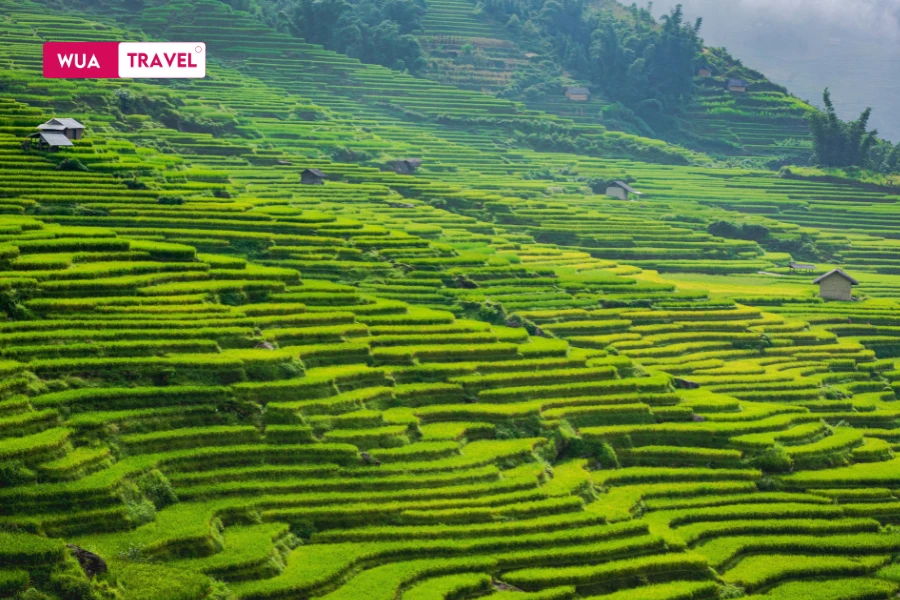
Central region (Da Nang, Hue, Hoi An…)
Average cost/day:40–65 USD/person
Central Vietnam is very affordable, has cheap food, and lots of nice hostels/homestays – but flights can be a bit expensive if booked late.
Day tours such as going to Cu Lao Cham, Hue ancient capital, or experiencing the Perfume River dragon boat range from 15–40 USD/tour.
Compare: The cost of food and accommodation in Hoi An is cheaper than in Da Nang, but public transportation is limited.
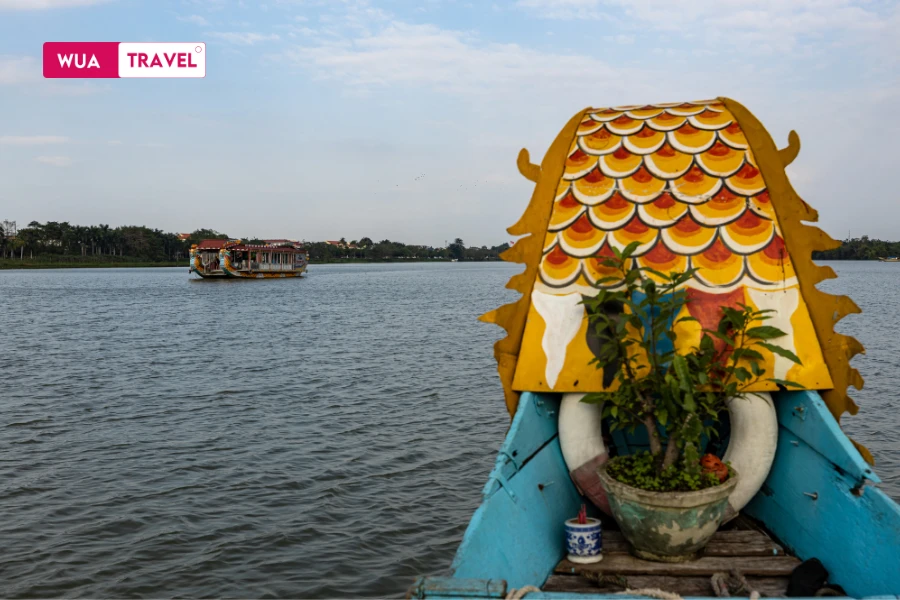
Southern region (HCMC, Da Lat, Phu Quoc…)
Average cost/day:45–70 USD/person
Ho Chi Minh City has a higher standard of living, so spending on food and hotels can be higher. Phu Quoc is the most expensive place in March.
Flights to Phu Quoc during peak season (weekends in March) can double if not booked early:80–150 USD/domestic round trip.
Tip: Visitors can save money by flying to Rach Gia or Ha Tien and then taking a speedboat to the island.
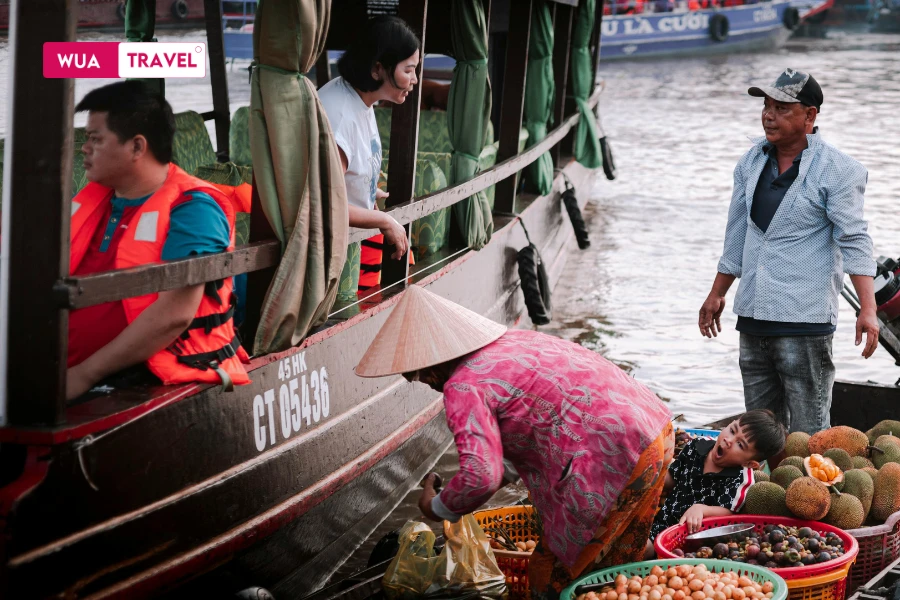
Detailed Breakdown – Typical Day Spending
| Category | Average cost (USD/day/person) | Note |
| Flight/bus tickets | 15–40 (domestic) | Price varies by route & booking time |
| Accommodation (homestay – 3 stars) | 10–40 | Cheaper prices in the North & Central regions |
| Eat and drink | 5–15 | Street food ~1–2 USD/dish, restaurant from 10 USD |
| Admission tickets | 2–10 | Most tourist attractions are only 1–3 USD/trip |
| Domestic travel | 3–10 | Grab, bus, motorbike rental |
| Shopping & entertainment | 5–20 | Depending on needs and destination |
Total cost for 1 basic day:
North: ~40 USD
Central region: ~45 USD
Southern: ~50–60 USD
Saving Tips – Don’t Spend Less, Spend Right
Book your hotel and flight tickets early
March is not as peak as Tet, but nice rooms at good prices will sell out quickly.
Pre-order 2–3 weeks to avoid price gouging.
Take advantage of deals and vouchers
Apps like Agoda, Booking, and Traveloka often have 10–15% discount codes for international travelers.
If you go in a group whole house for rent/homestay will be cheaper than a hotel.
Eat at local restaurants
Restaurants with a lot of locals are often cheaper, tastier, and cleaner than restaurants for Westerners.
For example: Hanoi vermicelli with grilled pork ~1.5 USD, Hoi An cao lau ~1.2 USD, Hue rice noodles ~1 USD.
Use public transport or ride-hailing apps
In Ho Chi Minh City, Da Nang, and Hanoi, there are Grab/Bike or cheap inner-city buses (~0.3–0.5 USD/trip).
If you are in Hoi An, you can bike rental only 1-2 USD/day to explore the old town very chill.
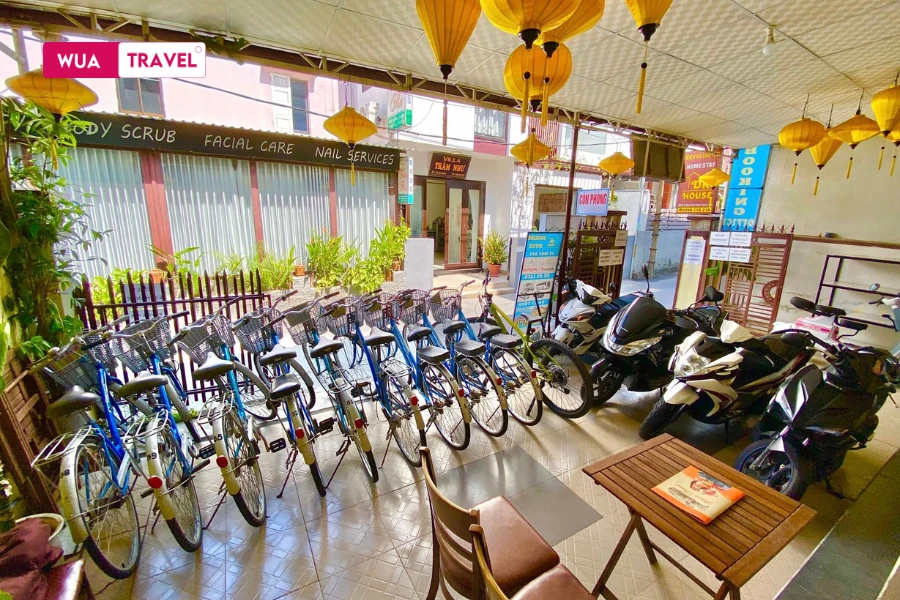
March Food Highlights
If you ask me what is most memorable after each trip in March, I will not hesitate to answer: taste. The fragrant smell of vermicelli soup with crab soup on a chilly Hanoi morning, the crispy smell of banh khoai by the quiet Huong River, or the smell of grilled fish steaming on Phu Quoc beach in the late afternoon –Vietnamese cuisine in March is a journey of emotions.
Northern Vietnam – Spring Wrapped in Leaves
In March, the North still has a bit of spring chill. Traditional dishes such as sticky rice with gac fruit, fried banh chung, bamboo shoot soup with pig’s feet good stir-fried ham are still present on the dining table of Hanoi people.
I was once invited to a family meal in Bac Ninh – simple with braised fish with galangal, pickled onions, but the rustic flavor is so heartbreaking.
Suggest: Try the dish crab noodle soup Nguyen Sieu street (Hanoi) in the early morning – sweet broth, soft and fatty crab soup, served with fresh green vegetables, the perfect spring flavor.
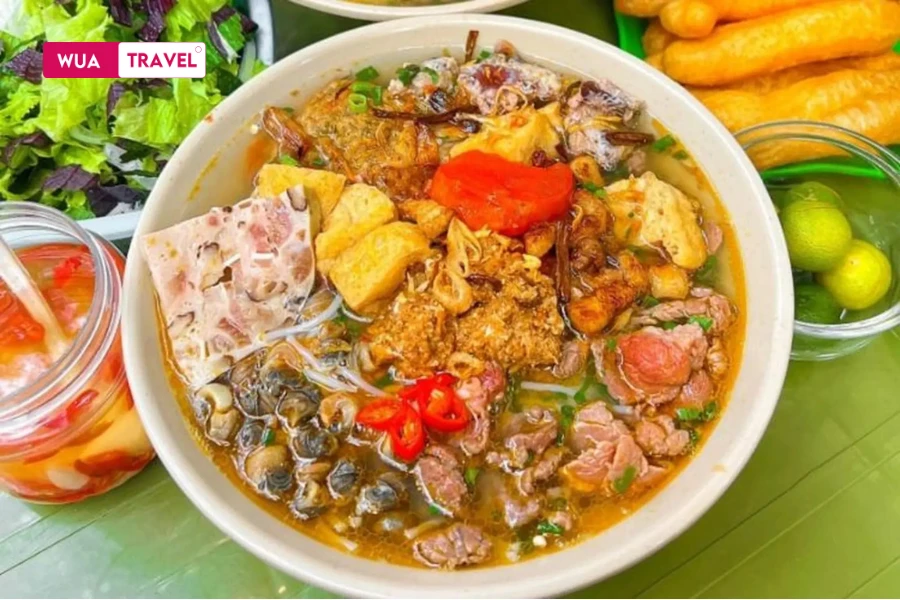
Central Region – Cool Taste in the Golden Sunshine
When the sun warms up, the Central region especially favors these dishes. cool – light – rich flavor. Quang noodles, cao lau, banh beo, banh nam, and sweet corn soup… are the perfect choices to beat the heat.
In Hue, one of the experiences I will never forget is the afternoon sitting by the Perfume River, sipping a glass of wine. lotus longan teacool, hear the temple bell in the distance.
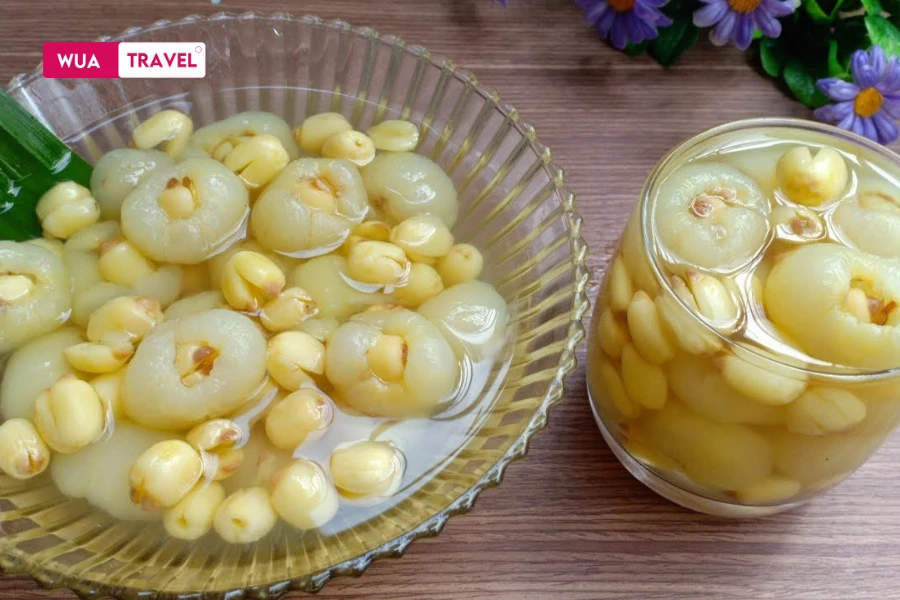
Suggest: FindDong Ba market (Hue) or Hoi An market to try all the “specialties in one afternoon”.
Southern Vietnam – Fresh Seafood & Tropical Cuisine
March is the peak of the dry season, meaning fresh seafood, delicious, and cheap in Phu Quoc, Vung Tau, Con Dao, or Ho Chi Minh City. Herring, Ham Ninh crab, dried squid, grilled scallops with scallion oil… are the “representative faces”.
In Ho Chi Minh City, where regional cuisines converge, you can eat a bowl ofNam Vang noodles in the morning, lunchHue beef noodle soup, do a lap at night, spring rolls, fried dough, and braised offal from the roadside cart.
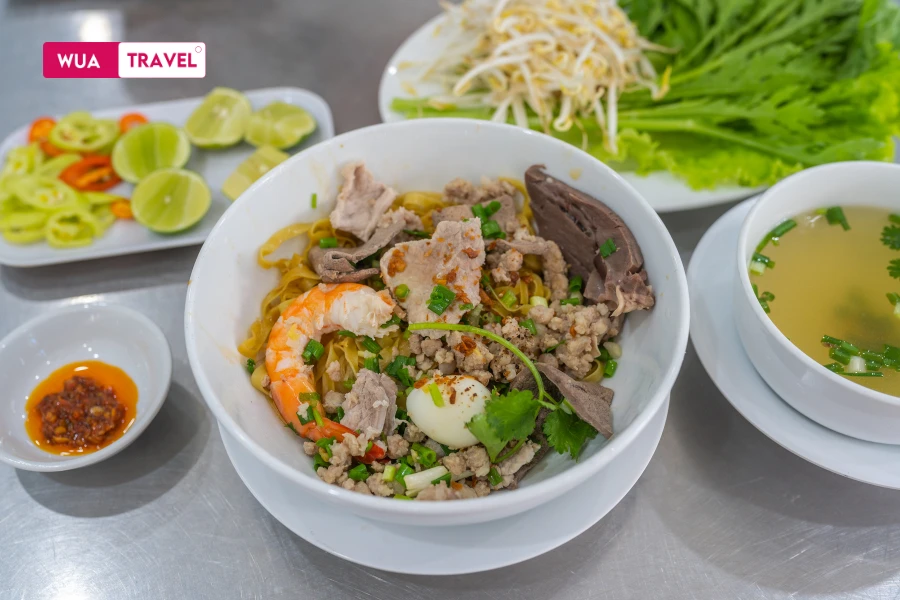
Suggest: Walk around the area a Ben Thanh night market to experience the full range of Southern cuisine, where you can listen to live music while eating spring rolls with super-rich fish sauce.
Popular Places to Eat and Drink in March
| Type | Featured Locations |
| Street food must-try | – Ta Hien Street (Hanoi)- Hoi An Night Market- Alley 284 Le Van Sy (HCMC) |
| Local restaurant | – Delicious Restaurant (Hanoi, Ho Chi Minh City)- Hell Rice (Hue)- Ra Khoi Seafood (Phu Quoc) |
| Special coffee shop | – The Note Coffee (Hanoi)- Faifo Rooftop (Hoi An)- The Workshop (TP.HCM) |
Personal Dining Experience
I still remember the first time I ate Quang noodles at a small restaurant in Hoi An – the owner was working and telling stories about her husband going to sea, while I was eating and absentmindedly looking at the shimmering lanterns on the street. The Quang noodles that day were not only delicious, but also have a memory.
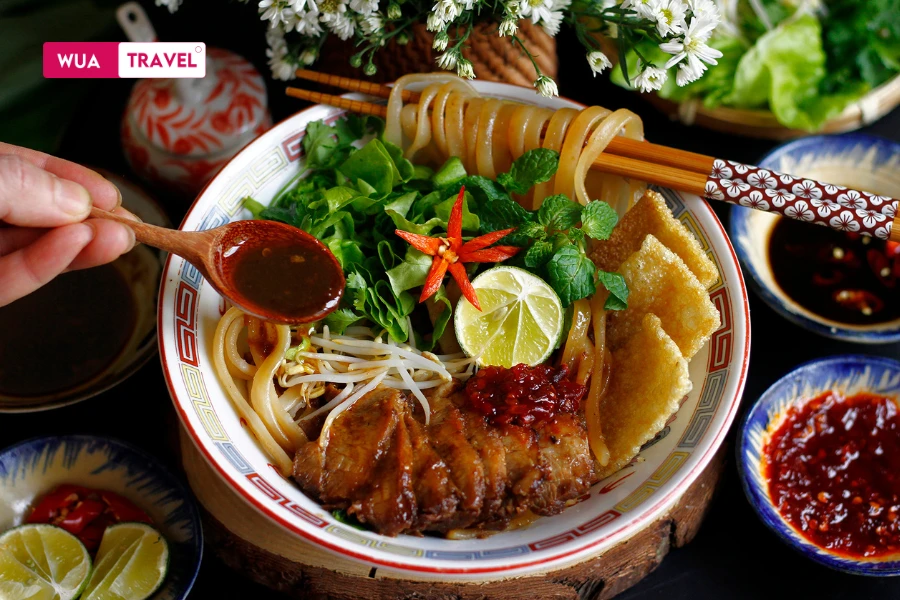
Or the last dinner in Da Lat in March, I chose to sit by the charcoal stove and eat chicken hotpot with perilla leaves in the cold night. It’s not just a dish – it’s a warm hug from the highlands before saying goodbye.
Combination suggestions:
- Eat mussel rice, then walk along the Perfume River at dusk.
- Enjoy egg coffee in Hanoi before the bus to Sapa.
- Order a plate of grilled seafood in Phu Quoc and watch the sunset at Dinh Cau – guaranteed you will want to come back next March.
FAQ – When Traveling to Vietnam in March
Below are some of the most common questions I get when sharing my March itinerary. If you’re wondering before your trip, you might find the answers you need right here.
Does it rain a lot in March?
No. This is a dry month in all three regions. The North can be chilly in the early mornings and evenings, but it rarely rains for long periods. The Central and South have almost no rain and beautiful sunshine.
What kind of clothes should I bring?
North: Light jacket, light scarf, sneakers.
Central & Southern regions: Wear cool, sun-protective clothing, hats, and sunglasses.
If you plan to go hiking or trekking, remember to bring good walking shoes and a light windbreaker.
Is the weather stable?
Quite stable. This is one of the best months for inter-regional travel because there is little rain, few storms, and moderate humidity. But you should still check the weather forecast for each region a few days before your trip for the most accurate updates.
How much money do you need for a week of travel?
Depending on the region and travel style, you can plan to:
- Economy (homestay, simple food):5–6 million VND (~200–250 USD)
- Average (3-star hotel, diverse dining):8–12 million VND (~350–500 USD)
- High-end (resort, private service): from 15 million VND or more (~600 USD)
Where is the cheapest place to eat?
North: Hanoi – many delicious and cheap dishes (bun cha, pho, banh cuon).
Central region: Hue has rich, cheap, and local street food.
Southern: Ho Chi Minh City has hundreds of street food options from 20-40k/dish.
How to save costs?
Book tickets and rooms early, and avoid booking close to holidays.
Use voucher-hunting apps (Traveloka, Agoda, Klook, ShopeeFood).
Take public transport or rent a motorbike if exploring the city.
Eat at local restaurants – delicious and cheap.
How many days should I go?
From 5 to 10 days is reasonable if you want to experience 2–3 zones. For example:
- Hanoi – Sapa – Ninh Binh: 7 days
- Da Nang – Hoi An – Hue: 5 days
- Ho Chi Minh City – Phu Quoc or Da Lat: 6–8 days
What is the proper order of visiting?
IdeallyNorth to South, taking advantage of the warming weather. For example:
- Hanoi → Hue → Hoi An → Ho Chi Minh City
Or if you fly a lot, choose clusters close together to save travel time: - Da Nang → Hoi An → Hue (shared bus route)
Should I book a tour?
Depending on your needs:
- If you go for the first time, or have adults/children → the tour helps save time and effort.
- If you like to explore freely, more flexible self-sufficiency.
Currently, there are many small 1-2 day tours (city tour, food tour, motorbike tour), you can combine them into your own schedule for a deeper experience.
Conclusion
March is not as noisy as Tet, nor has it entered the peak of summer, but that is what makes it a golden time to travel to Vietnam. A month of the gentle change of seasons, belong to nature is in full bloom and journeys of discovery – of landscapes, cultures, and of ourselves.
From Peach blossoms in Sapa, leisurely days on the Perfume River, arrive the clear waters of Phu Quoc… I found a Vietnam that is gentle but also full of surprises. There are cold mornings in Hanoi that make me want an egg coffee, and sunny afternoons in Hoi An that just sitting quietly, watching people passing by, is enough to make life feel lighter.
